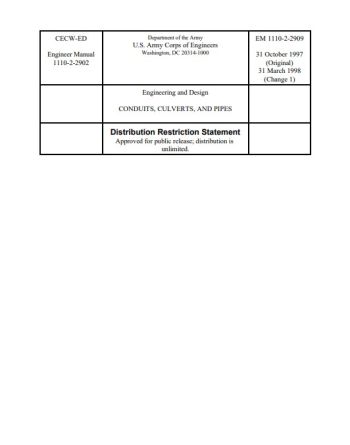Conduits, Culverts, and Pipes (EM 1110-2-2902)
United States Army Corps of Engineers, 1998

This manual provides (a) guidance on the design and construction of conduits, culverts, and pipes, and (b) design procedures for trench/embankment earth loadings, highway loadings, railroad loadings, surface concentrated loadings, and internal/external fluid pressures.
Reinforced concrete conduits and pipes are used for dams, urban levees, and other levees where public safety is at risk or substantial property damage could occur. Corrugated metal pipes are acceptable through agricultural levees where conduits are 900-mm (36-in.) diameter and where levee embankments are not higher than 4 m (12 ft) above the conduit invert. Inlet structures, intake towers, gate wells, and outlet structures should be concrete, or corrugated metal structures may be used in agricultural and rural levees. Life cycle cost studies are required where corrugated metal pipes are used.
Revision ID: 1955
Revision Date: 07/22/2022
